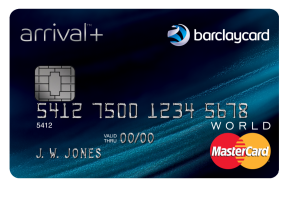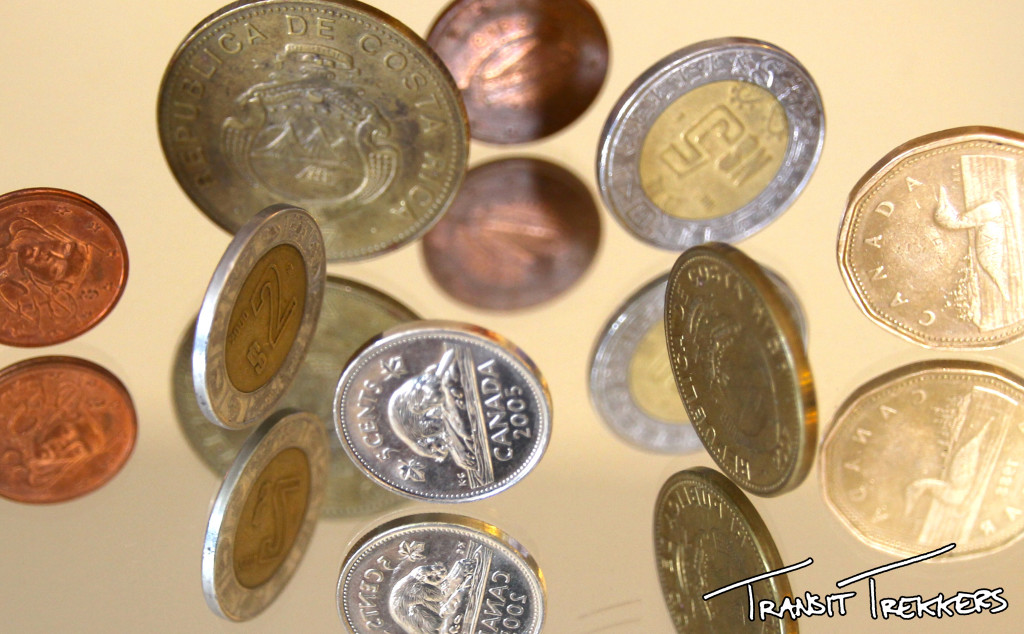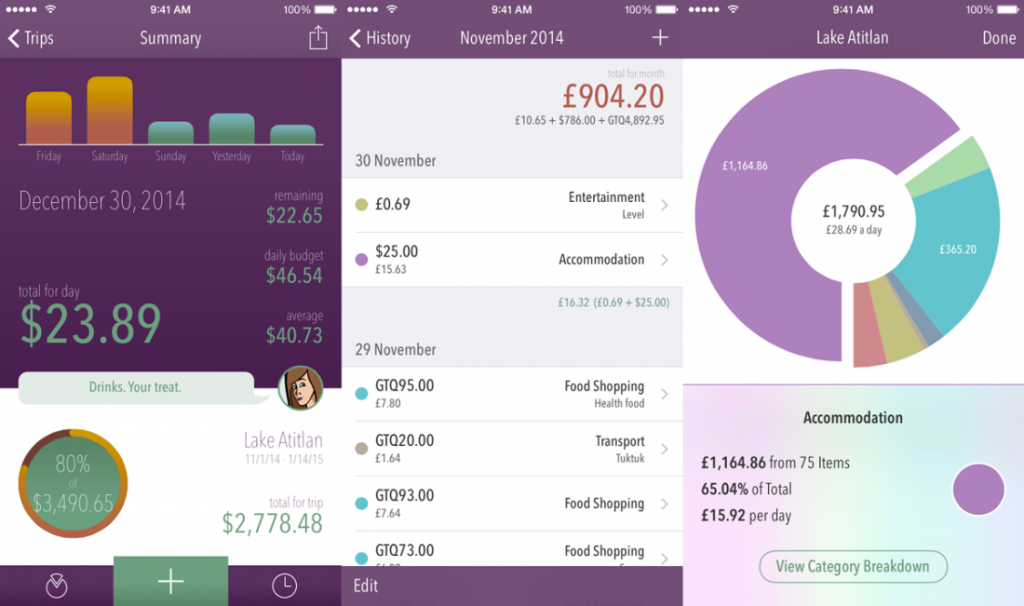While we were busy saving up money for our trip, we also needed to figure out how to set up our finances before we left and how to manage money once we were on the road. We researched the best credit card and debit card for travel, plus savings accounts and travel checking accounts. As a couple we decided it would be much easier to use one shared account for travel expenses (instead of Splitwise-ing everything), but we were not quite ready to combine all of our finances.
Savings Account
We each opened our own separate online savings account with Barclays. They offer a decent interest rate (1.00% APR) for people who want to use it as a holding tank but will be withdrawing shortly thereafter. It’s about 1,000 times better than my Wells Fargo savings account, which gives me approximately zero interest. Barclays offers some bonuses if you agree to auto-deposit a certain amount each month and agree not to withdraw it for some pre-specified amount of time. And if you really want to save for long term, you’d probably be better off with a mutual fund or playing around with the stock market, but we won’t try to give advice on that.
Checking Account
We each have our own personal checking accounts with our respective banks – Wells Fargo and Bank of America, in case you are curious. However, we thought it would be much easier (and it is!) to have one combined account for spending while traveling together. Our requirements for a travel checking account: personal debit cards that can be used at foreign ATMs, zero foreign transaction fees, and an easy online interface for transferring money and checking balances.
After hours of research the best we could find was the Charles Schwab High-Yield Investor Checking account. In order to open this checking account you’ll also need to sign up for a brokerage account with Charles Schwab. However, as we understand it, there is no minimum balance requirements for either account so you don’t even need to fund the brokerage account. This checking account is incredible! We were able to put both of our names on it so they could send us each a debit card in the mail. With the debit card we can withdraw cash from any ATM in the world without any fee. Technically you get charged the ATM fee, but at the end of each month Schwab reimburses you for all ATM fees incurred during the month. In six+ months of travel, we’ve checked the receipts, done the math and Schwab hasn’t missed one. We can also use the debit card for any purchases around the world without foreign transaction fees. And there is no monthly fee to maintain the account. Aaaand you even earn a little bit of interest on your checking account balance each month! Schwab also has simple online account management and some of the best in-branch and over-the-phone customer service.
Also, when traveling to less developed countries or small out of the way cities make sure to plan your cash out a little more. If we are going to a small town and we know the ATM situation is going to be unreliable, we will make sure to withdraw more cash than we think we will need beforehand.
Credit Card
 There are a lot of credit cards out there and a lot of them claim to be the best card for travel. After some research the best we found was the BarclayCard Arrival Plus credit card. We decided I would open this credit card under my name since Tamara loves her Chase Sapphire VISA credit card and had no interest in opening another at the time.
There are a lot of credit cards out there and a lot of them claim to be the best card for travel. After some research the best we found was the BarclayCard Arrival Plus credit card. We decided I would open this credit card under my name since Tamara loves her Chase Sapphire VISA credit card and had no interest in opening another at the time.
When I opened the BarclayCard Arrival+ credit card account, I earned a quick 40,000 reward point sign-up bonus after spending $3,000 in the first 90 days. Then it gives me double points on every purchase and I can use the points to reimburse any travel purchase made with the card. This is a bit confusing at first, but once you get the hang of it, it’s pretty easy. For example, if I spend $100 at the grocery store, I get 200 points. I can then redeem the points to reimburse any travel expense made with the card (e.g. any hotel reservation, flight, taxi ride, bus ticket, etc.). There are a few other little bonuses that add up to a couple of dollars here and there and they do a better job of explaining the details here. The Arrival+ card has zero foreign transaction fees so we use it as much as possible on the road and pay it off with our shared travel Schwab account. There is an $89 annual fee for this card but it is waived for the first year, and if you are traveling a lot it definitely pays for itself.
Transit Trekker Travel Credit Card Tips
- Always pay off in full each month. This is the easiest way to maintain good credit and stay out of debt.
- Open new card(s) to take advantage of sign-up bonuses (not too many all at once though).
- Offer to pay for group dinners/outings to maximize points (assuming your friends will actually pay you back via Venmo or apparently the new Facebook money exchange).
- Set up automatic bill payment while traveling so you don’t miss a payment because you didn’t have Wi-Fi.
- Tell the company about your travel plans so they don’t block any expenses.
- Try not to spend more than 30 percent of your total credit limit.
- Have a way to call the bank like Skype or Google Voice just in case your account is frozen (not everything can be done over email)
In Peru, Bolivia, Chile and Argentina, we haven’t had a problem using a credit card in big cities. Obviously the more developed a country, the more likely they accept plastic. There hasn’t been a noticeable preference for VISA versus MasterCard in South America.
Overview
Now that we had all the pieces to the puzzle, it was time to put them in place – excel table style!
Tracking Expenses on the Road
Before we left on the trip we used this homemade excel spreadsheet to track our at-home expenses and meet our savings goals. But while traveling, there are a lot more cash expenses and currency exchange rates to keep track of so it’s much easier to use an app specifically designed for this task. Enter Trail Wallet.
Designed by full time travel nomads/app developers, this app has everything you could want for tracking finances in a foreign country. Easy to use, customizable, built in currency exchange rates, and the app doesn’t require Wi-Fi all the time. Two downsides: 1) Data is saved locally on one device, meaning travel partners can’t both access the data on their respective phones, and 2) We don’t always want to pull out an iPhone after every transaction. To get around this we sometimes keep receipts or write down notes on a scrap of paper to input later. One of our favorite features is that you can export the raw data to excel and then manually manipulate it and make your own charts. Our inner excel nerd gets happy about this.
Resources
We are not experts on this stuff and you should always do your own research to decide what is best for you. Here are some finances resources we found useful:
Also, don’t forget to check out our other trusted resources and travel bogs we follow on a regular basis: Transit Trekker Resources





November 30, 2015 at 5:31 AM
Very impressive!